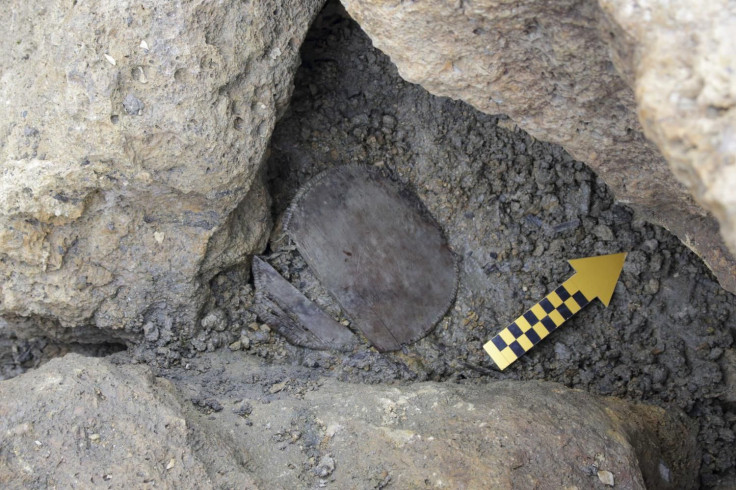Prehistoric Humans Ate Wheat In The Mountains, A Clue About Early Farming

A frozen chest of food from prehistoric times shows that some of the earliest humans carried wheat with them as they hiked up mountains and settled across Eurasia. The finding could help scientists understand the beginnings of farming and how cereal grains played into that.
“This is an extraordinary discovery if you consider that of all domesticated plants, wheat is the most widely grown crop in the world and the most important food grain source for humans, lying at the core of many contemporary culinary traditions,” researcher André Colonese said in a statement from the University of York.
Read: Ancient Humans Evolved to Live in the Mountains
The ancient chest was a wooden container that dates back to the early Bronze Age, the period following the Stone Age marked by a switch from stone tools to ones made of metals like bronze, copper and tin. It was also the period in which humans developed their first written languages. Between these two advancements and others, the early Bronze Age represents a significant point in the history of human culture.
After that wooden container was discovered in Switzerland, 8,700 feet up in the Alps, Colonese worked with others to analyze the food contents that were previously stored inside. According to a study in the journal Scientific Reports, the scientists found biomarkers that indicate the presence of grain, specifically whole wheat and either barley or rye.
The discovery of those cereal grains could help fill a gap in our understanding about the beginning of agriculture, particularly when it comes to those foods, around which there is an especially large lack of information.
“The domestication and transmission of cereals is one of the most fundamental components of early farming, but direct evidence of their use in early culinary practices and economies has remained frustratingly elusive,” the study says. Part of the reason for that is how hard it is to identify an ancient cereal grain, due to how quickly it degrades. “So whilst edible plants with oil-rich seeds and [outer coatings of wax] have been widely identified in ceramic vessels, reports of cereals are notable by their absence.”
Scientists want to understand how crops like wheat were included in the diets of ancient people, whether it be in bread, beer or other foods: “It enables us to piece together when and where this important food crop spread through Europe,” Jessica Hendy, from the Max Planck Institute for the Science of Human History, said in the university statement.
According to the study, the container that held the remains of the grains was found in an “Alpine ice patch” at the summit of the Lötschen Pass, an area that was historically traversed to get through the mountains.
“The wooden container found on the Lötschen Pass can be linked with either trading connections or seasonal movements from lowland areas to upland pastures as part of the pastoral economy, although hunting could also explain the requirement to access such rocky and glaciated areas of the high Alps,” the authors explained.
That ice patch helped preserve the chest’s contents over the thousands of years that have passed since it was left there.
Read: Did Ancient Farming Cause Climate Change?
To identify the biomarkers that indicated what plant substance was once inside, the researchers used a technique called gas chromatography-mass spectrometry, which allowed them to separate chemicals within a sample from one another to analyze them separately.
They were expecting to find some sort of milk residue that would indicate porridge, the university said, but instead found the grains.
“We didn’t find any evidence of milk, but we found these phenolic lipids, which have never been reported before in an archaeological artefact, but are abundant in the bran of wheat and rye cereals and considered biomarkers of wholegrain intake in nutritional studies,” Colonese said.
His team wants to use their method on ceramic artifacts that once contained food as well, to see if there is any more evidence of ancient grains that was previously missed. Usually researchers have found the remains of just milk and meat in those ceramic containers.
“This evidence sheds new light on life in prehistoric alpine communities, and on their relationship with the extreme high altitudes,” Newcastle University’s Francesco Carrer said in the statement. “People traveling across the alpine passes were carrying food for their journey, like current hikers do. This new research contributed to understanding which food they considered the most suitable for their trips across the Alps.”

© Copyright IBTimes 2024. All rights reserved.











